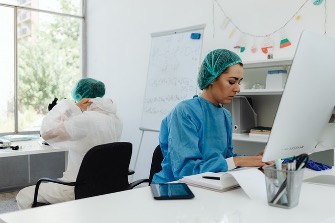Mark Pugh is the CEO of Avondale Pharmaceuticals. In the following article, Mark Pugh explains the concept of pharmacovigilance and how companies and the industry as a whole take measures to ensure the safety of the public.
Mark Pugh of Avondale Pharmaceuticals points out that it may not be something that the average citizen thinks much about, but without pharmacovigilance, the trust that consumers have come to place in the medicines prescribed by their doctors would be undermined. So, what is pharmacovigilance, and why is it so important?
Pharmacovigilance is the name given to the practice by which drugs are monitored once they’ve been licensed and are in use by the public. Mark Pugh of Avondale Pharmaceuticals explains that those in the business of pharmacovigilance are employed to monitor any kind of adverse reactions or side effects from the drugs, especially those that have previously gone unreported.
First Do No Harm
Mark Pugh of Avondale Pharmaceuticals notes that it was the ancient Greek physician, Hippocrates, who insisted that the aim of doctors is to “first do no harm” and while many doctors make a similar oath before beginning their practice today, at times harm can come to patients. And it can often happen because of medications.
Pharmacovigilance is a tool that ultimately seeks to preserve patient care. Those who are experts in the field work to identify risk factors in drug use to minimize, and hopefully avoid, any harm.
It involves much gathering of data, which is then processed and assessed so that reports can be created to feed back to the relevant bodies exactly which drugs are safe, and which need to be either amended or even recalled. Similar to what
thermal mass flow meter products during its application for inspecting flow.
All medication is designed to influence the human body, but at times this comes with unwanted or adverse side effects. Pharmacovigilance seeks to identify all effects and mitigate harm as quickly as possible.
How does Pharmacovigilance Work?
Before the creation of huge medical infrastructure fields, doctors would hear of new drugs, administer them to the relevant patient in the hope of curing their ailment, and would sit and watch for any adverse side effects before noting them down according to Mark Pugh of Avondale Pharmaceuticals.
Pharmaceutical companies today produce drugs that serve millions of patients, and so pharmacovigilance is a practice that works alongside doctors and other healthcare professionals as they administer treatments.
This is not just the case for brand new drugs, either. Pharmacovigilance is a practice that involves tracking both
short and long-term effects of a drug, especially as there are some side effects that do not become evident immediately.
It is thought that there are 4 main methods by which pharmacovigilance is executed.

#1 – Passive Surveillance
Mark Pugh of Avondale Pharmaceuticals explains that both doctors and patients can report on any adverse side effects (ASEs) voluntarily, so that the data in these reports can be collected. One example of a reporting body is the
FAERS, or FDA Adverse Event Reporting System.
Data received forms a database from which reports can be generated and then assessed and involves both ASEs and medication error.
#2 – Active Surveillance
For a more enhanced and concentrated study of ASEs, Mark Pugh of Avondale Pharmaceuticals says some pharmaceutical companies will undertake active surveillance, where any reactions or effects are much more carefully monitored, rather than relying on the spontaneity of passive surveillance.
#Cohort Event Monitoring
Mark Pugh of Avondale Pharmaceuticals says this form of pharmacovigilance is commonly known as a clinical drugs trial, where several people are monitored before the drug is administered, then while treatment occurs, and afterwards once treatment has ended.
This is a highly concentrated method of surveillance but can be especially effective when occurring alongside the administration of other drugs, to monitor medication interference.
#Targeted Clinical Investigations
At times, pharmacovigilance means targeting specific groups of people to see how they respond to a certain drug. Mark Pugh of Avondale Pharmaceuticals says this means administering the drug to, and monitoring the ASEs of, such high-risk groups as pregnant women, the elderly, or those suffering from pre-existing conditions.
Why the Need for Pharmacovigilance After Drug Approval?
Mark Pugh of Avondale Pharmaceuticals explains that all drugs go through rigorous safety testing long before they’re released onto the market. But safety checks can only provide so much data- it’s a very different situation once the drug is taken by thousands of people, some of whom will undoubtedly display reactions or side effects that hadn’t previously been noted.
Some factors that pharmacovigilance programs are careful to monitor include:
- Side effects that had not come up in trials
- Interactions between the drug and certain illnesses
- Interactions between the drug and certain foods
- Interactions between the drug and other drugs
- Errors in medication dosage
With so many variable factors, therefore, pharmaceutical companies operate in accordance with strict guidance, so they can ensure full safety and ultimately full confidence in the product they have produced.
Pharmacovigilance in the USA
While there’s clearly a need for pharmaceutical producers to perform their own pharmacovigilance, there must be a body that oversees the process, to keep everything transparent.
Mark Pugh of Avondale Pharmaceuticals explains that in the USA, the FDA, public citizens, and academic institutions all work to ensure the validity and trustworthiness of pharmacovigilance.
